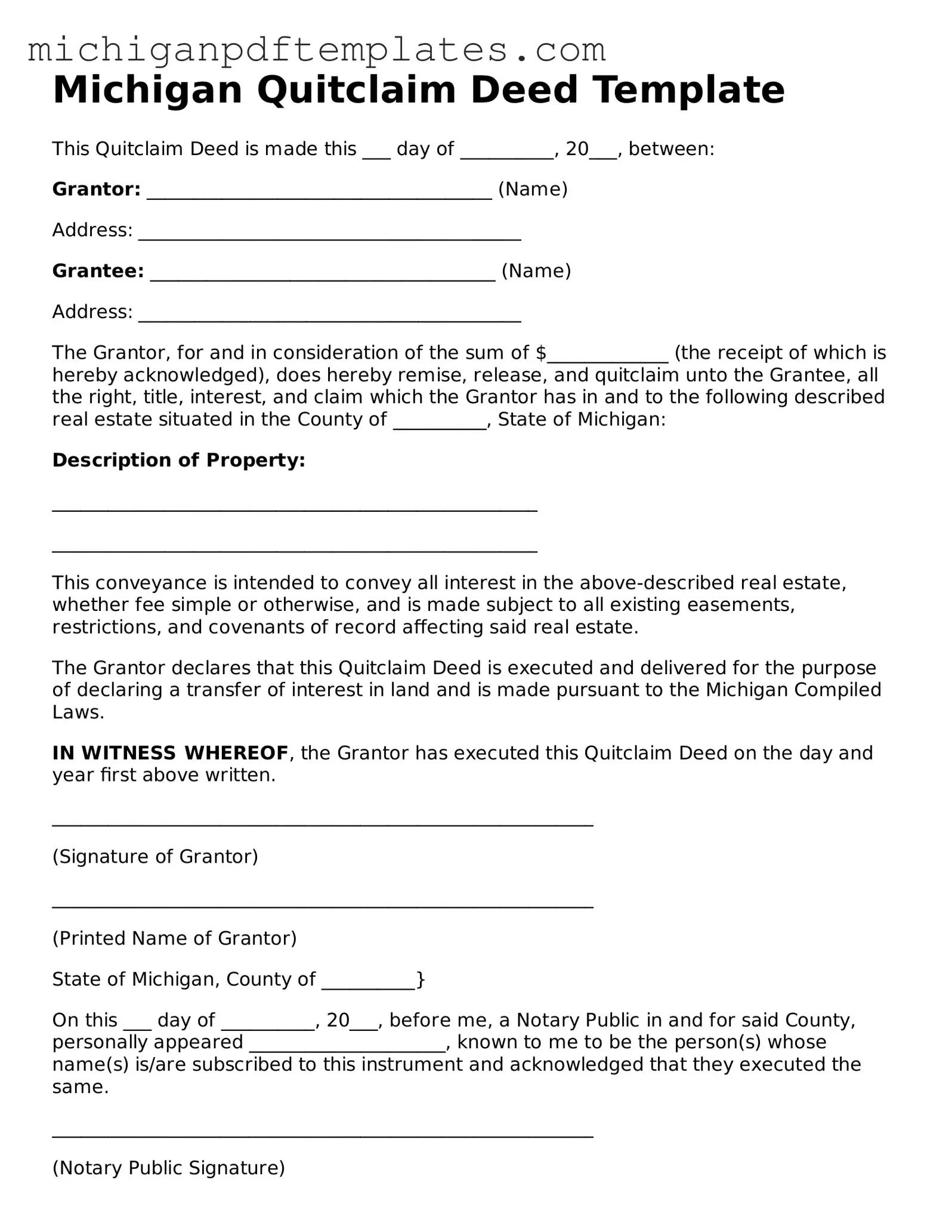The Michigan Quitclaim Deed form serves as a crucial tool for property owners looking to transfer their interests in real estate without the complexities often associated with traditional property transfers. This form allows an individual, known as the grantor, to convey their ownership rights to another party, called the grantee, with minimal fuss. Unlike warranty deeds, which provide guarantees about the title's validity, quitclaim deeds offer no such assurances. They simply transfer whatever interest the grantor holds at the time of the transfer. This makes them particularly useful in situations such as transferring property between family members or clearing up title issues. It's important to note that while a quitclaim deed can be a straightforward solution, it does not protect the grantee from any potential claims against the property. Therefore, understanding the implications of this form is essential for anyone considering its use in Michigan. Proper execution and recording of the deed are also vital steps in ensuring the transfer is legally recognized and enforceable, making it imperative to follow the correct procedures.
